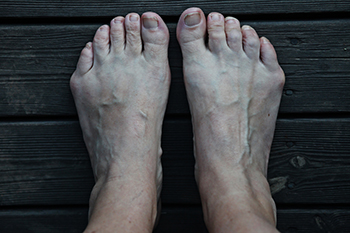
A bunionette, also known as a tailor’s bunion, is a bony bump that forms on the outside of the foot, near the little toe. It can cause pain, swelling, and difficulty wearing certain shoes, often leading to irritation or redness. Symptoms include a noticeable bump, discomfort when walking, and soreness when pressure is applied. Bunionettes result from wearing tight or ill-fitting shoes, genetic factors, or abnormal foot mechanics. Over time, these factors can lead to the misalignment of the fifth metatarsal bone. Treatment options range from conservative measures, like wearing wider shoes and using padding, to more advanced interventions, including surgery. A podiatrist can diagnose the condition and recommend the best treatment plan, whether it includes non-invasive methods or surgical correction. If you are experiencing pain or discomfort from a bunionette, it is suggested that you schedule an appointment with a podiatrist to explore your treatment options and find relief.
If you are suffering from bunion pain, contact one of our podiatrists of The Foot Specialists. Our doctors can provide the care you need to keep you pain-free and on your feet.
What Is a Bunion?
Bunions are painful bony bumps that usually develop on the inside of the foot at the joint of the big toe. As the deformity increases over time, it may become painful to walk and wear shoes. Women are more likely to exacerbate existing bunions since they often wear tight, narrow shoes that shift their toes together. Bunion pain can be relieved by wearing wider shoes with enough room for the toes.
Causes
- Genetics – some people inherit feet that are more prone to bunion development
- Inflammatory Conditions - rheumatoid arthritis and polio may cause bunion development
Symptoms
- Redness and inflammation
- Pain and tenderness
- Callus or corns on the bump
- Restricted motion in the big toe
In order to diagnose your bunion, your podiatrist may ask about your medical history, symptoms, and general health. Your doctor might also order an x-ray to take a closer look at your feet. Nonsurgical treatment options include orthotics, padding, icing, changes in footwear, and medication. If nonsurgical treatments don’t alleviate your bunion pain, surgery may be necessary.
If you have any questions, please feel free to contact our offices located in Waltham and Milford, MA . We offer the newest diagnostic and treatment technologies for all your foot care needs.
